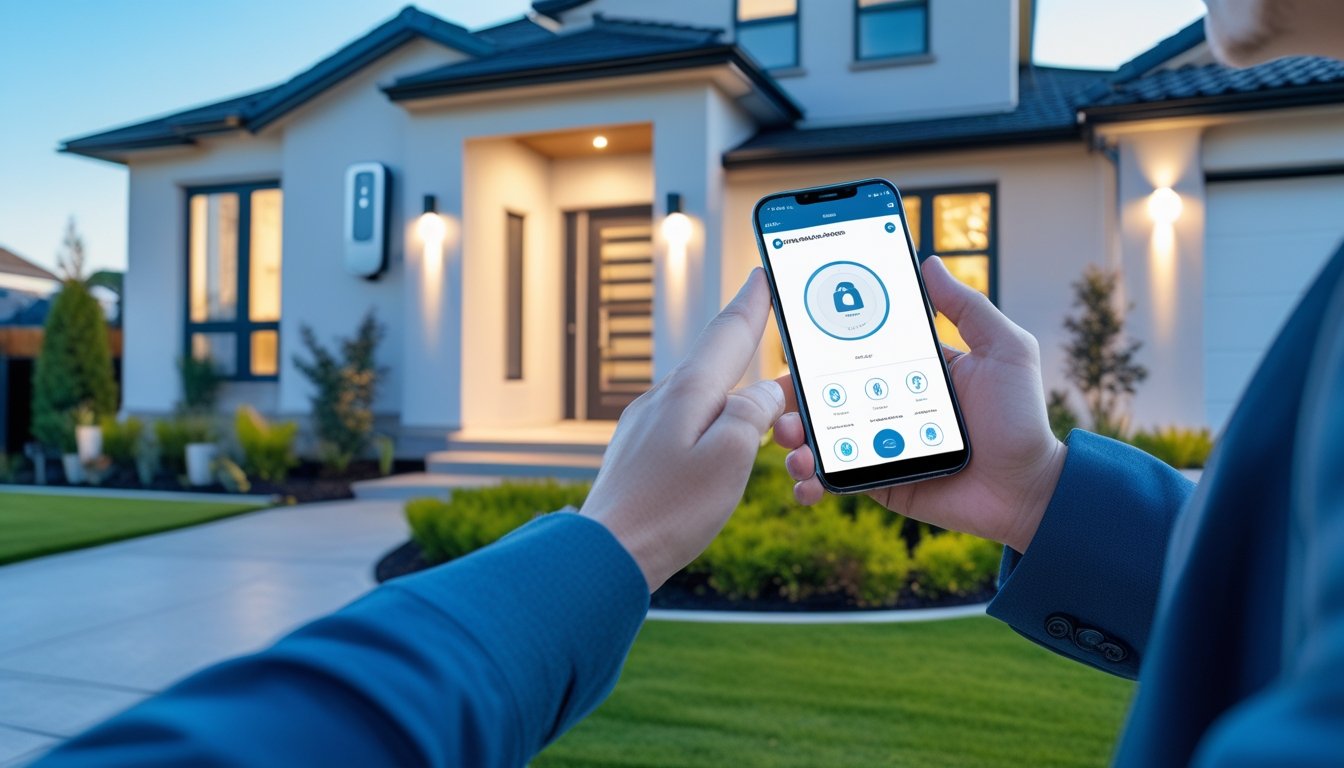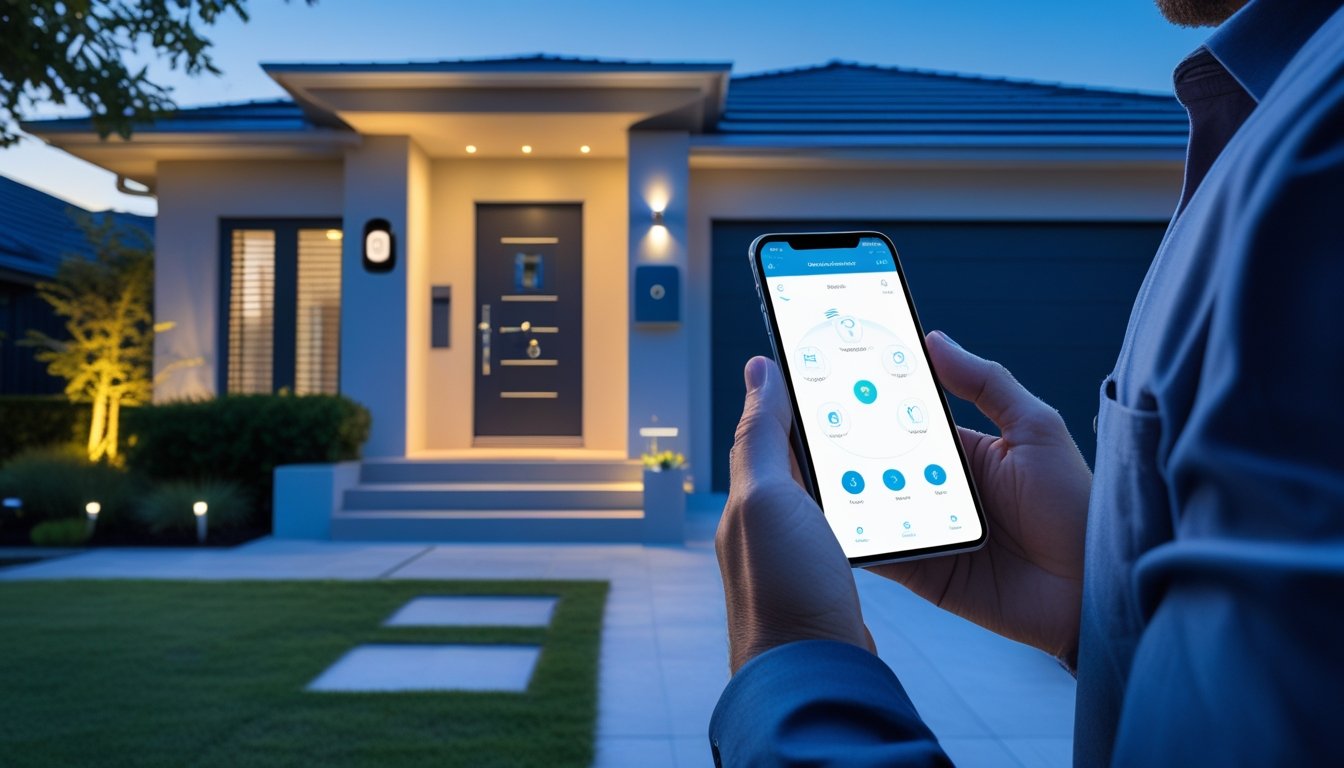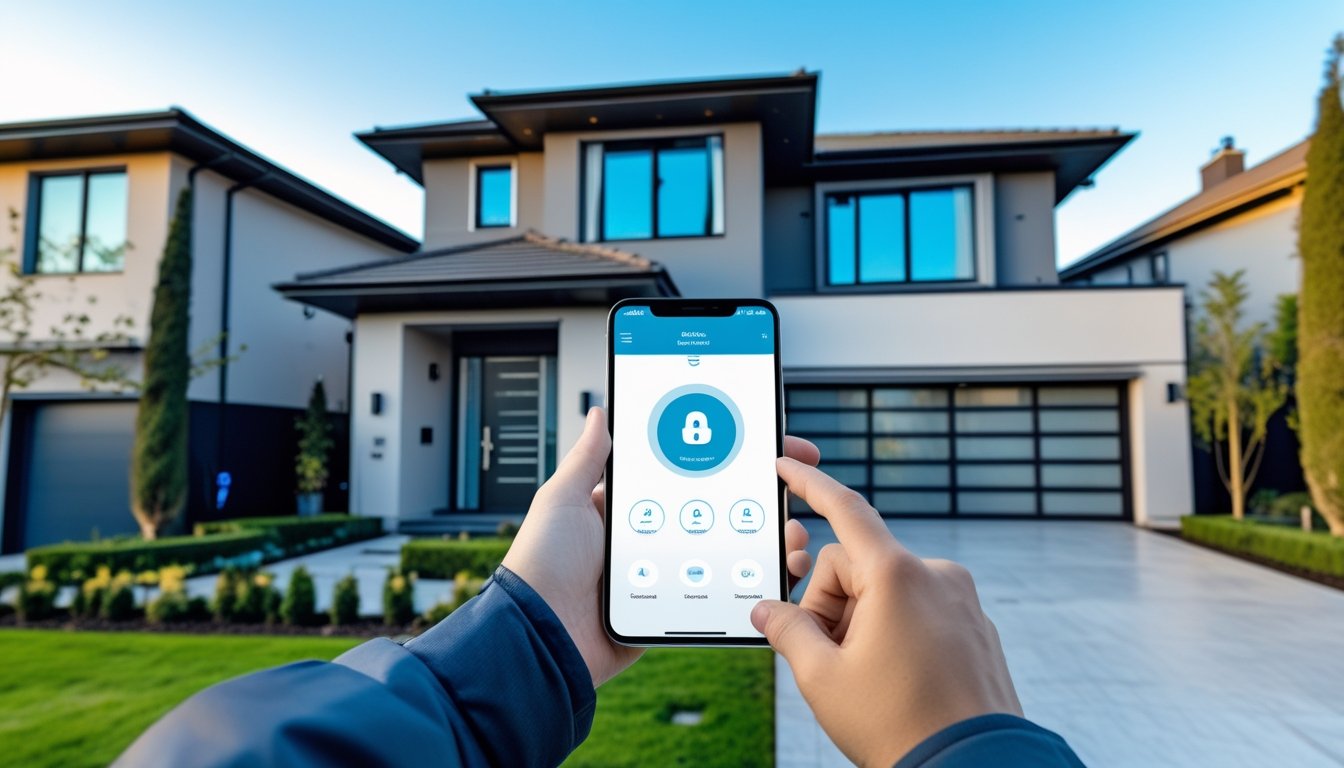Late updated: 15 Jul 2025 14:07
Written by: Elena Prescott
Modern Techniques for Boosting Home Security: Enhancing Safety at Home
In an age where technology evolves rapidly, it's crucial for us to fortify our homes with contemporary security techniques. From simple low-tech solutions to sophisticated digital systems, there are myriad ways to deter potential intruders and safeguard our personal sanctuaries. Integrating smart home technology with traditional security measures is one of the most effective strategies for enhancing home security.

Incorporating devices such as smart video doorbells or motion-sensor lights can provide an added layer of protection without breaking the bank. These modern tools not only serve as deterrents but also offer real-time monitoring capabilities, empowering us with control over our home environments. Leveraging technology while maintaining aesthetic appeal ensures our homes remain secure and visually pleasing.
Peace of mind is indispensable, and by adopting cutting-edge security measures, we can create a safer living space for ourselves and our families. Whether it's using grid-independent solutions or exploring the latest smart home advancements, modern techniques provide comprehensive options to address a variety of security needs.
Key Takeaways
- Smart technology enhances home security.
- Combining traditional and digital methods optimises protection.
- Modern techniques offer cost-effective solutions.
Modern Techniques for Enhancing Home Security
In today's digital world, combining traditional security measures with modern technologies is crucial for a well-rounded protection strategy. By assessing existing security capabilities and implementing cutting-edge enhancements, we can fortify our homes against unauthorized access.
Comprehensive Home Security Assessment
Before undertaking upgrades, we must first evaluate our current home security measures. Conducting a thorough assessment helps identify vulnerabilities. We start by examining all entry points, including doors, windows, and garages. This includes checking locks, hinges, and frame conditions.
A critical part of this assessment is reviewing existing alarm systems. We determine efficiency and identify any outdated components. Assessing camera coverage and blind spots ensures no area is left unsupervised.
We also recommend engaging a professional security consultant. Their expertise can pinpoint weak areas and suggest effective solutions. This combination of personal checks and professional advice provides a robust foundation for further improvements.
Upgrading Door Locks and Deadbolts
One of the most effective ways to enhance security is upgrading our door locks and deadbolts. Modern deadbolts, especially those with reinforced plates, offer substantial protection against forced entry.
Smart locks bring an additional layer of security and convenience. These can be controlled via smartphones, allowing remote access control and real-time alerts. Users can assign temporary access codes for guests or service providers.
When choosing door locks, it's essential to opt for those with high security ratings. Consider materials such as stainless steel for durability. By investing in advanced locking mechanisms, we significantly reduce the risk of break-ins.
Reinforcing Doors and Entry Points
Reinforcing our doors and entry points is another critical step. This involves securing door frames with metal jambs and reinforcing hinge and strike plate areas.
Using a solid core or steel doors adds resistance against forced entry. We should also consider installing door viewers or smart video doorbells to enhance visibility.
In reinforcing windows, it is beneficial to use shatter-resistant films or security bars where aesthetically feasible. Secure garages and backdoors as they are often overlooked entry points.
Implementing these reinforcements creates a strong barrier, deterring potential intruders and providing peace of mind for occupants.
Advanced Alarm Systems Integration
Alarm systems have evolved beyond simple breach alerts. Modern systems integrate with smart home technologies, offering advanced features such as motion detection and video analytics.
Our approach involves installing systems with automation capabilities. These can interact with lighting and camera systems to simulate presence, even when we're not at home. Cloud connectivity allows us to monitor and control systems remotely from smartphones or other devices.
Advanced alarm systems should include environmental sensors. These detect smoke, carbon monoxide, and flooding, adding layers of safety beyond just intruder alerts. For a truly comprehensive security strategy, ensuring all components are seamlessly integrated is essential.
Contemporary Approaches to Home Protection

In today's world, integrating modern technologies with traditional security measures is key to safeguarding our homes more effectively. We explore innovative applications of security cameras and motion sensors, strategic exterior lighting and landscaping, ensuring the security of secondary entrances, and the unique role of guard dogs.
Deploying Security Cameras and Motion Sensors
Security cameras serve as our eyes when we're not home. Installing high-definition cameras at strategic points around our property allows us to monitor real-time activity via smartphones. Motion sensors complement these devices by alerting us to any suspicious movement. Together, they form a robust surveillance system.
Smart cameras with cloud storage and AI integration can identify and notify us of unusual activities, adding an extra layer of protection. For optimal effectiveness, it is wise to regularly check and maintain our equipment, ensuring that all components are up to date and functional.
Exterior Lighting and Landscaping Strategies
Well-planned exterior lighting not only enhances our home's visual appeal but also acts as a deterrent to potential intruders. Strategically placed lights illuminate dark corners and pathways around our property, creating fewer hiding spots. Motion-activated lights surprise and scare off any unwanted visitors by throwing them into the spotlight.
Thoughtfully designed landscaping further bolsters security. Dense bushes and hedges should be trimmed to prevent them from becoming cover for trespassers. Incorporating gravel paths adds an auditory alert as approaching footsteps crunch underfoot, aiding in early detection.
Ensuring Garage and Secondary Entrance Security
Garages and side entrances often attract intruders due to perceived vulnerability. We must ensure these access points are fortified. Installing high-quality locks and deadbolts on all doors is fundamental. For garages, sensors that detect unauthorised access enhance our security strategy.
Smart technology plays a pivotal role here, too. Smart locks and connected sensors can notify us instantly of any breaches. It's essential to maintain these systems and ensure they're constantly updated to guard against new threats. Additionally, securing windows in these areas with bars or shatter-resistant films can prevent break-ins.
Utilising Guard Dogs for Household Safety
Guard dogs offer a traditional yet effective layer to our safety plan. They provide companionship and serve as a living alarm system, alerting us through barking in response to suspicious activity. Properly trained guard dogs can also engage potential threats, giving us crucial time to respond.
The psychological deterrent cannot be overstated; the presence of a guard dog can often dissuade intruders purely on sight. We should ensure they are well-cared for, trained by professionals, and socialised with family members to blend seamlessly into our home environment.
Frequently Asked Questions

We often receive queries about optimising home security with modern technologies. From smart devices to using artificial intelligence, various strategies can make our homes safer and more secure.
What are the best practices for integrating smart technology into home security systems?
Integrating smart technology requires careful planning and selection of reliable devices that suit our specific needs. We should ensure compatibility between devices like smart locks, cameras, and alarms. Regular updates and network security protocols are also essential to protect these systems from cyber threats.
How can I use automation to enhance the safety of my residence?
Automation can enhance safety by scheduling routines and alerts. By employing smart lights, thermostats, and surveillance cameras, we create a responsive environment that adapts during our absence. For instance, lights that turn on at night can simulate occupancy, deterring potential intruders.
What are the most effective deterrents against residential break-ins currently available?
Effective deterrents include visible security cameras, high-quality locks, and motion-activated lights. Physical barriers such as fences and double-glazed windows also contribute. Signage indicating the presence of a security system can discourage burglars by making our homes less appealing targets.
In what ways can artificial intelligence contribute to improving domestic security measures?
Artificial intelligence enhances domestic security by analysing data to identify unusual patterns. With AI-powered cameras and systems, we gain real-time alerts and insights into potential security concerns. This technology also enables facial recognition features that can provide personalised access control.
How important is it to have professional monitoring for a home security system?
Professional monitoring adds a crucial layer of security. It ensures that alerts of suspicious activities are promptly addressed, offering peace of mind. In emergencies, monitoring centres can contact emergency services, providing an immediate response that is rapid and effective.
What are the advantages of wireless over wired security solutions for homes?
Wireless security systems offer flexibility and easier installation compared to wired solutions. They can be easily moved or expanded as our needs change. Additionally, wireless systems reduce the vulnerability associated with cutting wires, making them a more secure option for many homeowners.
